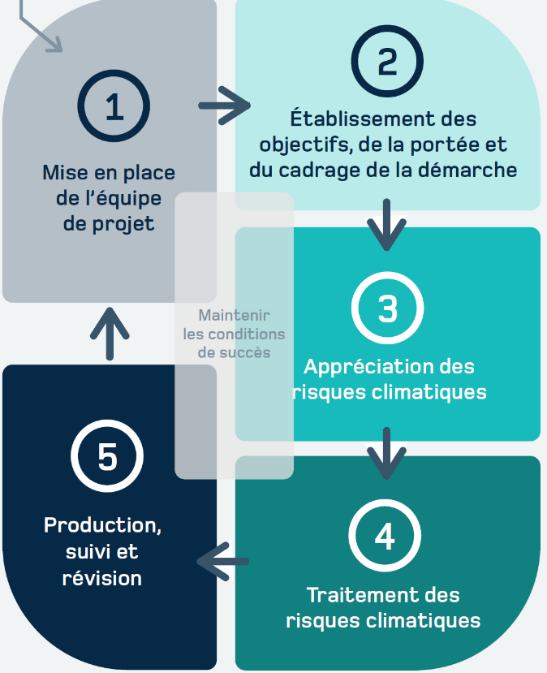9 The climate change adaptation process
Climate change will lead to significant changes in several climate variables. These unprecedented climatic conditions will undermine the functionality of several types of infrastructure, compromise many services, disrupt socio-economic activities, harm the public’s health and quality of life, and endanger various natural systems and the survival of certain species. Adaptation to climate change involves implementing various measures to limit these impacts, improve the resilience of our societies and, where appropriate, take advantage of any beneficial effects of climate change. Furthermore, various human actions can facilitate the climate transition of natural systems.

Climate change adaptation is therefore essential. Figure 9.1, taken from Ouranos and MELCCFP (2024), presents the steps of the adaptation process aimed at identifying climate risks and the measures to mitigate the impacts of these changes on various systems and, ultimately, producing an adaptation plan. This approach is divided into five steps:
- setting up the project team;
- establishing the objectives, scope and context of the process;
- assessing climate risks;
- addressing climate risks; and
- producing, monitoring and reviewing.
The main objective when setting up the project team is to identify the person responsible for the process and the team members who will carry out the work. The role of this team, which should include representatives from various departments, is to develop the plan and ensure its implementation. Various experts may also join the team as advisors and provide occasional support for the process. The involvement of all team members is essential to ensure the success of the adaptation process.
Fact sheets 10 to 12 discuss steps 2 to 4 of the adaptation process. Fact Sheet 13 covers the concept of risk and risk matrices, and Fact Sheet 14 presents an example application.
Adaptation to climate change must absolutely be accompanied by measures aimed at reducing greenhouse gas (GHG) emissions. In Quebec, the adaptation process supports the climate plan (Gouvernment du Québec 2024), allowing municipal organizations to develop a planning document covering both adaptation and mitigation issues.